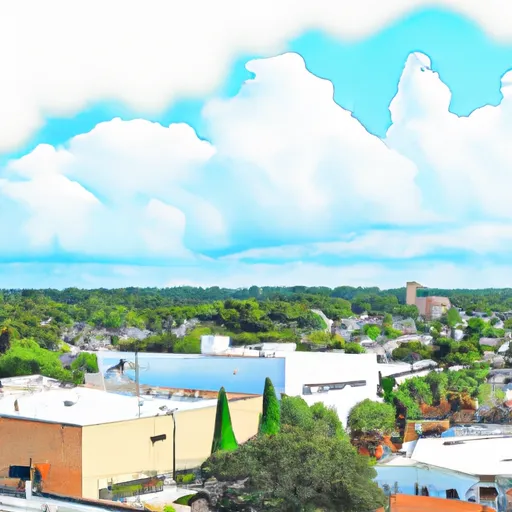-
 Snoflo Premium
Snoflo Premium
Get unlimited access to all our content
With no Ad interruptions! - Start Your Free Trial Login with existing account
Lecanto
Eden Index
Climate
7.2
•
Recreation
4.8
•
Community
2.9
•
Safeguard
5.2/10

Lecanto is a small community located in Citrus County, Florida. The town experiences a humid subtropical climate, characterized by hot and humid summers and mild winters. Summers are long and wet, with frequent afternoon thunderstorms, while winters are relatively dry and cool. Average temperatures range from the high 80s°F (30s°C) in summer to the mid-60s°F (around 20°C) in winter.
Lecanto is nestled among several lakes and rivers, providing ample opportunities for outdoor recreation. The area is known for its numerous springs, such as the nearby Homosassa Springs, where visitors can swim, kayak, and observe diverse wildlife. The Crystal River, a popular waterway, allows for boating, fishing, and snorkeling among Florida's famous manatees. Additionally, the nearby Withlacoochee State Trail offers 46 miles of paved trails for biking, walking, and jogging, showcasing the beautiful natural surroundings of the region.
In conclusion, Lecanto, Florida, offers a warm and humid climate throughout the year, ideal for outdoor activities. With access to lakes, rivers, and springs, residents and visitors can enjoy a variety of recreational opportunities, including water sports, wildlife observation, and biking.
What is the Eden Index?
The Snoflo Eden Index serves as a comprehensive rating system for regions, evaluating their desirability through a holistic assessment of climate health, outdoor recreation opportunities, and natural disaster risk, acknowledging the profound impact of these factors on livability and well-being.
Climate Health Indicator (CHI): 7.2
Lecanto receives approximately
1361mm of rain per year,
with humidity levels near 89%
and air temperatures averaging around
21°C.
Lecanto has a plant hardyness factor of
9, meaning
plants and agriculture in this region tend to thrive here all year round.
By considering the ideal temperature range, reliable water supplies, clean air, and stable seasonal rain or snowpacks, the Climate Health Indicator (CHI) underscores the significance of a healthy climate as the foundation for quality living.
A healthy climate is paramount for ensuring a high quality of life and livability in a region, fostering both physical well-being and environmental harmony. This can be characterized by ideal temperatures, reliable access to water supplies, clean air, and consistent seasonal rain or snowpacks.
Weather Forecast
Streamflow Conditions
Tampa Bay
Area Rivers
Tampa Bay
Snowpack Depths
Tampa Bay
Reservoir Storage Capacity
Tampa Bay
Groundwater Levels
Recreational Opportunity Index (ROI): 4.8
The Recreational Opportunity Index (ROI) recognizes the value of outdoor recreational options, such as parks, hiking trails, camping sites, and fishing spots, while acknowledging that climate plays a pivotal role in ensuring the comfort and consistency of these experiences.
Access to outdoor recreational opportunities, encompassing activities such as parks, hiking, camping, and fishing, is crucial for overall well-being, and the climate plays a pivotal role in enabling and enhancing these experiences, ensuring that individuals can engage in nature-based activities comfortably and consistently.
Camping Areas
| Campground | Campsites | Reservations | Toilets | Showers | Elevation |
|---|---|---|---|---|---|
| Holder Mine - Withlacoochee State Forest | 13 | 34 ft | |||
| Coons Creek Military - MacDill AFB | None | 5 ft | |||
| Rainbow Springs State Park | None | 39 ft | |||
| Little Manatee River State Park | None | 21 ft | |||
| Paynes Prairie State Park | None | 92 ft | |||
| Raccoon Creek Military - MacDill AFB | None | 5 ft | |||
| E G Simmons County Park | None | 7 ft | |||
| Ross Prairie | None | 54 ft | |||
| Lake Manatee State Park | None | 68 ft | |||
| Myakka River State Park | None | 16 ft |
Catastrophe Safeguard Index (CSI):
The Catastrophe Safeguard Index (CSI) recognizes that natural disaster risk, encompassing floods, fires, hurricanes, and tornadoes, can drastically affect safety and the overall appeal of an area.
The level of natural disaster risk in a region significantly affects safety and the overall livability, with climate change amplifying these risks by potentially increasing the frequency and intensity of events like floods, fires, hurricanes, and tornadoes, thereby posing substantial challenges to community resilience and well-being.
Community Resilience Indicator (CRI): 2.9
The Community Resilience Indicator (CRI) recognizes that education, healthcare, and socioeconomics are crucial to the well-being of a region. The CRI acknowledges the profound impact of these elements on residents' overall quality of life. By evaluating educational resources, healthcare accessibility, and economic inclusivity, the index captures the essential aspects that contribute to a thriving community, fostering resident satisfaction, equity, and social cohesion.

